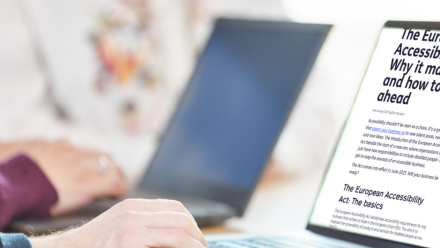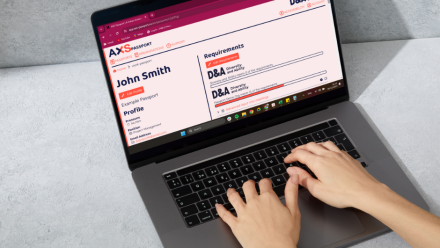Adjustments: Supporting the Nine Protected Characteristics
24th July 2024 by Scarlett James

Disability is just one of the nine protected characteristics outlined under the Equality Act 2010. Yet reasonable adjustments are rarely considered outside of the context of disability. Why is that the case?
We’re never just Disabled. Our lived experiences are diverse, and the barriers we face often relate to many different aspects of our identity (Read our blog, What is Intersectionality and Why Does It Matter in the Workplace, to discover more about intersectionality). The adjustments that a Disabled woman needs will often look different to a Deaf man.
By broadening the conversation around adjustments to recognise all nine characteristics, you’ll be able to provide adjustments that help everyone feel more included.
What are the 9 Protected Characteristics?
We’ve already defined reasonable adjustments under the Equality Act 2010. But let’s look at the nine protected characteristics outlined in the act.
It’s illegal to discriminate against anyone because of:
- age
- gender reassignment
- being married or in a civil partnership
- being pregnant or on maternity leave
- disability, including mental health
- race including colour, nationality, ethnic or national origin
- religion or belief
- sex
- sexual orientation
The Equality Act applies at work, in education, as a consumer, when using public services, when buying or renting property and as a member or guest of a private club or association.
We’re fortunate in the UK to have an act pioneering legal expectations for inclusion. But the act is still flawed. The concept of nine characteristics has holes; for instance, it siloes the experiences of these identities when in reality, they overlap.
This lack of intersectionality throughout the act makes it harder to prove discrimination in cases where it is intersectional. Take a black woman facing microaggressions, such as being described as loud or angry, at work. She isn’t being discriminated against just because she is black or just because she is a woman, the discrimination she faces is greater than the sum of the parts.
Also, the Act only discusses adjustments for disability. But this isn’t the reality of adjustments in the workplace.
Why shouldn’t adjustments just be for Disabled people?
The key to a successful adjustments process is for everyone in the organisation to feel comfortable having conversations around and asking for adjustments. This is the first thing we tell clients in our workplace adjustment reviews. Encouraging everyone to think about the adjustments they would find beneficial removes us vs them rhetoric and discomfort around positive action. It becomes about everyone just getting the proper support.
Secondly, not everyone who is Disabled will feel able to share their disability with their employer. Others might not even identify as Disabled. There are so many barriers to diagnosis and disclosure (just as we talked about in our Neurodiverse or Neurodivergent blog!) By only giving adjustments to those who feel comfortable describing themselves as Disabled, you could be preventing the most marginalised members of your workforce from accessing support.
What is an intersectional approach to adjustments?
- Use the language of barriers consistently.
By consistently talking about barriers, you reduce the othering that Disabled people face and begin to create an intersectional approach. For example, not having access to a prayer room for religious purposes, being pregnant, and being expected to carry heavy loads are barriers. Speaking about all barriers (and, consequentially, all adjustments) in the same way means that people feel more comfortable conversing about disability and barriers.
- Intersectional adjustments should be anticipatory.
- Assume diversity is present and do what you can to remove barriers without anyone asking. For example, you could provide tampons and period products in your bathrooms, include your pronouns in your email signature, and send the interview questions to everyone in advance. Adopting these seemingly small practices reduces the barrier faced by those who would benefit from them, removing the need for them to ask to feel included. Demonstrating an openness to adapting your approach creates space for people to feel comfortable requesting more specialised measures.
- Model adjustments yourself
Talk about the adjustments you benefit from and how you work best. If you don’t think you access adjustments, you’re almost certainly wrong. Our AXS Passport data shows that everyone, regardless of disability, benefits from adjustments. Most people have a preferred font and typeface, use a spelling and grammar checker, and like to have the meeting agenda in advance. By being open about your preferences and needs, you model the behaviour you are hoping for from your team.
Everyone’s needs are different. Everyone benefits from a more inclusive workplace. Rethink how you approach workplace adjustments, including all nine protected characteristics, and you’ll create an environment that’s more inclusive. Show others how it’s done!
Ready to shake up adjustments? Contact our team to learn how we can change your process to be light years ahead of equality legislation.


